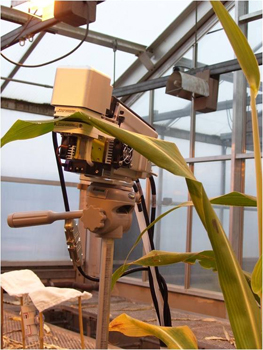Photosynthesis in sorghum under non-stress, cold and drought stress
Carbon assimilation through photosynthesis is the basis of crop productivity. However, increases in crop yield achieved in the last 50 years have not been attributed to changes in photosynthetic capacity. The complex genetic architecture of C assimilation and the lack of correlation between grain yield and photosynthesis were the most important arguments to postpone significant investments in this scientific area. The advancement of “omics” technology, high-throughput phenotyping methods and biofuels has significantly changed the paradigm. Considering there is a direct association between photosynthetic efficiency and biomass yield, the discovery and exploitation of the genetic architecture controlling C assimilation could have a significant impact on biomass yield for biofuel production. Dr. Salas Fernandez and her team are investigating genes/alleles associated with higher leaf photosynthetic capacity under non-stress, cold and drought stress using both field and controlled condition experiments.
Several genomic regions associated with gas exchange and chlorophyll fluorescence parameters were discovered and are currently being validated. These studies have demonstrated the existence of natural genetic variation in C fixation that could be exploited to breed for superior germplasm.

